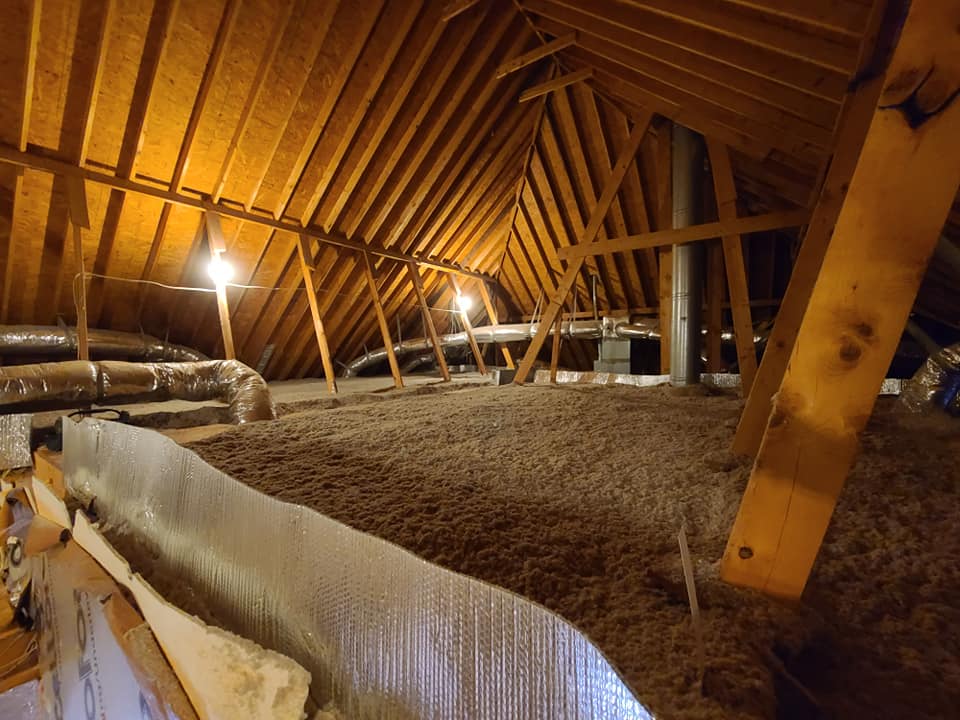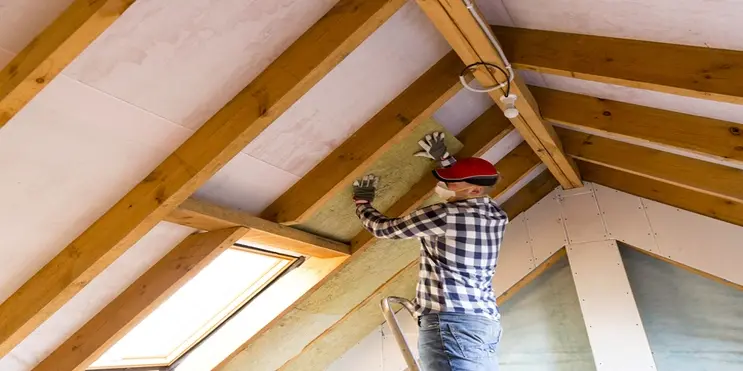Attic Insulation DFW: What You Need to Know Before Updating Your Insulation
Attic Insulation DFW: What You Need to Know Before Updating Your Insulation
Blog Article
Discover the Different Types of Attic Insulation and Their One-of-a-kind Advantages for Your Home's Energy Performance

Fiberglass Insulation
Fiberglass insulation is one of the most generally utilized products for attic insulation due to its excellent thermal efficiency and cost-effectiveness. Composed of little glass fibers, this material properly traps air, developing a shielding barrier that aids maintain consistent interior temperature levels. Its high R-value per inch makes it particularly efficient at withstanding heat transfer, which is vital for energy conservation in homes.
Installation of fiberglass insulation is reasonably straightforward, commonly available in batts or loose-fill types, accommodating numerous attic setups. Furthermore, it is resistant and non-combustible to moisture, decreasing the threat of mold and mildew development. This longevity adds to its longevity, making fiberglass a practical long-term financial investment for home owners.
Moreover, fiberglass insulation is typically produced from recycled materials, which enhances its eco-friendliness. The product can additionally add to soundproofing, decreasing sound transfer in between areas. While it is crucial to wear safety equipment throughout setup to prevent inflammation from the fibers, the overall advantages of fiberglass insulation, consisting of energy savings and environmental considerations, make it a popular choice for boosting attic room efficiency and advertising a comfy living environment.
Spray Foam Insulation
Spray foam insulation is an extremely efficient alternative for attic room insulation, understood for its exceptional air securing and thermal efficiency. This cutting-edge insulation product is made up of a mix of isocyanate and polyol resin, which, when incorporated, increases swiftly to fill up spaces and cavities in the attic room room. Its capacity to follow different surfaces guarantees a continuous barrier against air leakages, substantially lowering warmth loss during colder months and warmth gain during warmer periods.
One of the key advantages of spray foam insulation is its high R-value per inch, which indicates it offers superb thermal resistance in a reasonably thin application. This is specifically beneficial in attic rooms where area is frequently limited. In addition, spray foam can assist minimize wetness accumulation, minimizing the risk of mold and mildew and mildew growth, which can be detrimental to both the framework and indoor air high quality.
While the initial cost of spray foam insulation may be higher than conventional alternatives, its long-term energy cost savings, coupled with boosted comfort and boosted home value, make it a rewarding investment for home owners seeking improved power efficiency. Attic Insulation DFW. Generally, spray foam insulation stands out as an efficient solution for enhancing attic room insulation
Cellulose Insulation

Cellulose insulation is a preferred option for attic insulation, primarily made up of recycled paper items treated with fire retardants. This eco-friendly alternative is known for its excellent thermal efficiency, efficiently reducing warmth transfer in both summertime and cold weather. The thick make-up of cellulose enables it to load spaces and voids in attic room areas, giving a smooth barrier versus air leaks.
Among the considerable advantages of cellulose insulation is its capability to resist mold and mildew and bugs, owing to the fire retardant therapies made use of throughout manufacturing. Furthermore, it flaunts a high R-value per inch, which translates right into premium power effectiveness. Homeowners can anticipate lower cooling and heating costs as a result of improved insulation.
Installment is generally completed with blowing loosened cellulose into the preferred location, allowing for a fast and efficient process. This technique additionally minimizes interruption to the existing framework. Furthermore, cellulose insulation has a fairly reduced ecological impact, as its production process uses recycled products, adding to sustainable building practices.
Rock Wool Insulation
Among the different choices for attic insulation, rock wool, why not find out more likewise referred to as mineral woollen, stands apart as a result of its outstanding thermal and acoustic efficiency. Made from recycled or natural materials, rock wool is produced by melting rock and rotating it into fibers, leading to a product that supplies excellent insulation properties.
One of the significant benefits of rock woollen insulation is its high R-value, which suggests its performance in standing up to heat flow. This characteristic not just boosts power efficiency but also adds to keeping a comfortable indoor temperature level year-round. Additionally, rock wool is inherently fireproof, making it a more secure option for homes as it can stand up to high temperature levels without melting or releasing poisonous fumes.
Additionally, rock wool insulation excels in soundproofing abilities, efficiently reducing noise transmission in between rooms and from outdoors resources. This makes it an optimal selection for home owners seeking a peaceful living environment. Rock wool is moisture-resistant, aiding to avoid mold growth and preserving the structural integrity of the attic room. In general, rock woollen insulation gives a detailed option for improving power effectiveness, security, and comfort in property setups.
Glowing Obstacle Insulation
Radiant barrier insulation acts as a reliable service for lessening warm transfer in attics, particularly in warmer environments. This sort of insulation works by reflecting induction heat far from living rooms, thus minimizing the quantity of heat that gets in a home during heat - Attic Insulation DFW. Normally made up of a very reflective material, such as aluminum foil, radiant barriers are set up in attic rooms, encountering the roof, where they can intercept incoming heat from the sun
The main advantage of glowing obstacle insulation is its capacity to reduced cooling expenses. By showing warm as opposed to absorbing it, radiant barriers can help maintain a more stable indoor temperature, minimizing the work on a/c systems. This performance translates right into lower energy costs and raised convenience for home owners.
Along with energy cost savings, radiant barriers can also add to enhanced indoor air quality. By reducing heat build-up, they assist lessen humidity levels, which can prevent mold and mildew growth and enhance overall air blood circulation. When mounted properly, radiant obstacle insulation can be an indispensable addition to any kind of energy-efficient home, making it a worthwhile consideration for house owners wanting to enhance their attic room insulation method.
Conclusion
In final thought, recognizing the various types of attic insulation-- fiberglass, spray foam, cellulose, rock woollen, and radiant barriers-- allows property owners to make enlightened decisions relating to power efficiency. By selecting the proper insulation product, significant decreases in power costs can be achieved, along with enhancements in interior convenience.

In final thought, recognizing the different kinds of attic room insulation-- fiberglass, spray foam, cellulose, rock woollen, and glowing obstacles-- makes it possible for homeowners to make informed choices relating to energy performance.
Report this page